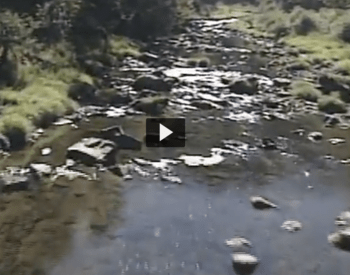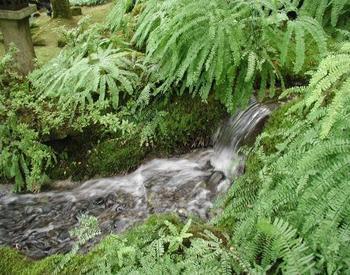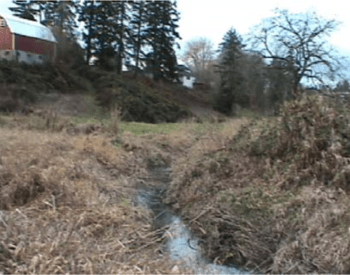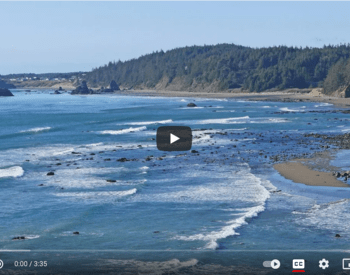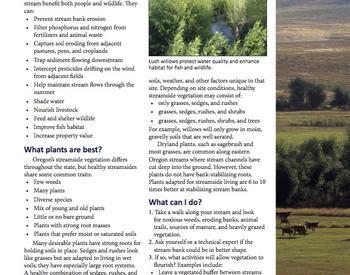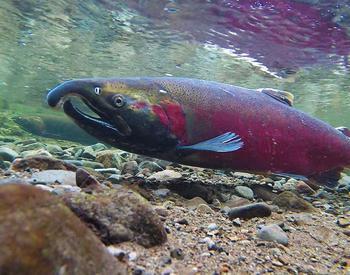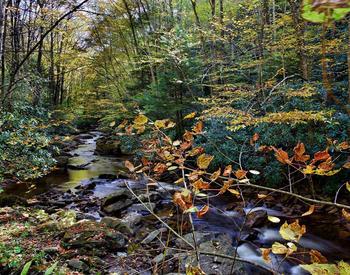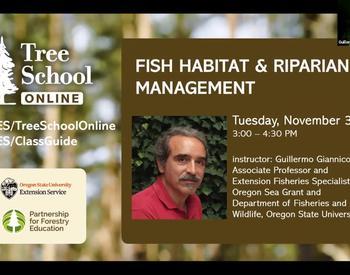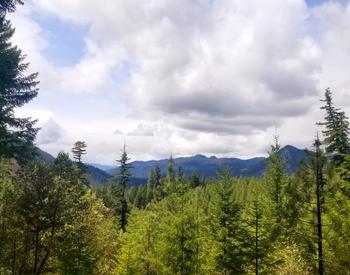Transcript
Welcome to living on the land, an award-winning source of useful information brought to you by your Oregon State University Extension Service. Are your stream banks healthy? Don't know. It never hurts to take a look. Let's take a walk along your stream. Do you see erosion? Or invasive leaves. How about livestock trails, manure or grazed vegetation? Do you have crops right up to the water? If so, your stream bank could probably. Be in better shape. There are a number of options that will help the environment and bring you into legal compliance. After all, it's the law that Oregon farmers and ranchers allow vegetation on stream banks to grow to provide shade, stabilize banks and filter out pollutants. To keep livestock from nibbling on stream bank munchies, create a vegetated buffer between streams and adjacent pens, barns, pasture, and cropland. You can fence livestock away from streams as part of a rotational grazing system. You can manage occasional chopping on these plants. Using troughs and nose pumps can also quench the thirst of livestock while protecting stream banks. If you depend on a stream to water livestock limit access points or stream crossings. Make sure these crossings don't become sources of pollution. Don't forget to remove or control leaves. Livestock love shade. So provide shade away from stream banks. Same goes for salt licks and minerals, which can be placed in the uplands to encourage animals to move away from streams and graze pastures more evenly. Never let grass get below 3 to 4 inches on pastures. Keep those feels healthy and well managed. Leave your stream B straightening or rip wrapping natural waterways is illegal in most cases and may worsen erosion and flooding. Find out which plants are most appropriate for your location. These could include willows, alders and Dogwood. Many local soil and water conservation districts make such plants available at low cost. In early spring each year. To learn more, check out our companion podcast on streamside vegetation. Available on iTunes U. For more information on stream side vegetation, contact your local extension agent soil and Water Conservation district or Watershed council, or download our companion publication at extension.oregonstate.edu and thanks for listening.
This podcast is part of the Living on the Land series. It provides concise information on how to best protect your stream areas with native vegetation and grazing strategies that help wildlife and property values. Primarily directed to small-acreage landowners east of the Cascades.
This is from the Living on the Land series. Download the related PDF - Living on the Land: Got a Stream? Grow Plants!
The phrase “Living on The Land” is used with permission from Living on The Land Stewardship for Small Acreage, © 2008, UNCE/WSARE.
